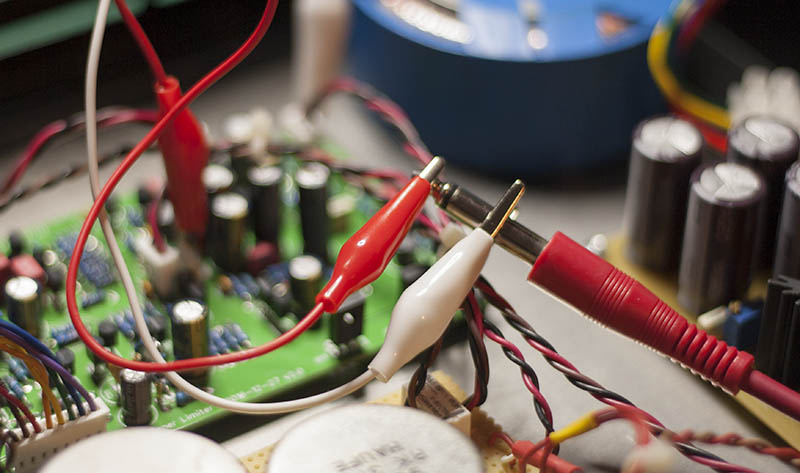Potato Cakes
Well-known member
Okay, finally powered it up with out letting out any magic smoke.
So both channels are really noisy with the circuit in, very similar to radio interference and perfectly clean bypassed, I know getting through the transformer part of the wiring is fine. This happens on both channels. Channel 2 has about 15 less gain than channel 1 and when I do the fine tuning step 1 the waveform on the oscilloscope looks very different. Noise is present with BYP1 (input transformer to board) disconnected but with BYP2 still connected. With BYP disconnected it goes away. Level differences do not change with swapping transformer, BYP 1,2, input or output connections.
Transformers being used are Sowter 1295 for the input (wired backwards for 3:1, no attenuation taps) and 1365 for the output. There is +8dB of gain when compressor is bypassed.
The fancy meters seem to track pretty good and there is plenty of travel in the gain reduction trimmer to get it where you want.
The stereo linking works but when disengaged the lower output channel shows less gain reduction then none when the mode is switched back and forth. It is almost as if there is a residual charge on the gain reduction part of the circuit then it is dissipated when switching between compressor and limiter.
From what I can test, this thing gets really aggressive, but is able to sound much more smoothed out with the slower attack and Sidechain HPF.
Currently both channels have trimmers in place for R8 to do the fine tuning 1 step and socketed resistors per the BOM for R56 and R22.
I am very close to a working unit, I just need to figure out this noise issue and gain difference before I can go any further.
Thanks!
Paul
So both channels are really noisy with the circuit in, very similar to radio interference and perfectly clean bypassed, I know getting through the transformer part of the wiring is fine. This happens on both channels. Channel 2 has about 15 less gain than channel 1 and when I do the fine tuning step 1 the waveform on the oscilloscope looks very different. Noise is present with BYP1 (input transformer to board) disconnected but with BYP2 still connected. With BYP disconnected it goes away. Level differences do not change with swapping transformer, BYP 1,2, input or output connections.
Transformers being used are Sowter 1295 for the input (wired backwards for 3:1, no attenuation taps) and 1365 for the output. There is +8dB of gain when compressor is bypassed.
The fancy meters seem to track pretty good and there is plenty of travel in the gain reduction trimmer to get it where you want.
The stereo linking works but when disengaged the lower output channel shows less gain reduction then none when the mode is switched back and forth. It is almost as if there is a residual charge on the gain reduction part of the circuit then it is dissipated when switching between compressor and limiter.
From what I can test, this thing gets really aggressive, but is able to sound much more smoothed out with the slower attack and Sidechain HPF.
Currently both channels have trimmers in place for R8 to do the fine tuning 1 step and socketed resistors per the BOM for R56 and R22.
I am very close to a working unit, I just need to figure out this noise issue and gain difference before I can go any further.
Thanks!
Paul

























![Soldering Iron Kit, 120W LED Digital Advanced Solder Iron Soldering Gun kit, 110V Welding Tools, Smart Temperature Control [356℉-932℉], Extra 5pcs Tips, Auto Sleep, Temp Calibration, Orange](https://m.media-amazon.com/images/I/51sFKu9SdeL._SL500_.jpg)








